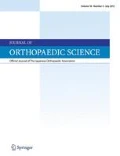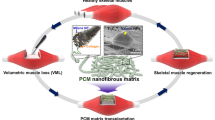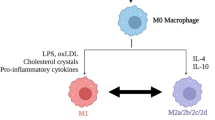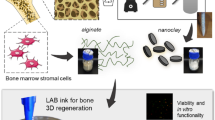Abstract
Background
We examined whether or not peripheral nerves can be regenerated using uncultured adipose-derived regenerative cells (ADRCs). We also searched for humoral factors that might promote the proliferation or migration of Schwann cells.
Methods
Thirty rats were randomly assigned to three groups. A 10 mm sciatic nerve defect was bridged using a silicon tube filled with physiological saline (control group), type I collagen gel (collagen group), and a mixture of ADRCs and type I collagen gel (ADRC group). The regenerated tissues were studied two weeks after surgery.
Results
Continuity of regenerated tissue was observed in all rats in the control group and the ADRC group. In the collagen group, only two rats had a bridge of thin tissue, which was barely visible macroscopically. Protein gene product 9.5 staining confirmed significantly faster regeneration in the ADRC group. The distributions of the PKH-26 positive areas and the S-100 protein positive areas were different, suggesting that the transplanted cells had not differentiated into Schwann cells. In real-time RT-PCR, neuregulin-1 (Neu-1) and vascular endothelial growth factor A (VEGFA) expression were detected in uncultured ADRCs before transplantation. The regenerated tissue in the ADRC group had higher levels of Neu-1 and VEGFA expression than the control group.
Conclusions
ADRCs promote peripheral nerve regeneration. The mechanism does not involve the differentiation of transplanted cells into Schwann cells, but probably involves the secretion of some type of humoral factor such as Neu-1 or VEGFA that promotes the proliferation or migration of Schwann cells.







Similar content being viewed by others
References
Millesi H, Meissl G, Berger A. The interfascicular nerve-grafting of the median and ulnar nerves. J Bone Joint Surg Am. 1972;54:727–50.
Battiston B, Geuna S, Ferrero M, Tos P. Nerve repair by means of tubulization: literature review and personal clinical experience comparing biological and synthetic conduits for sensory nerve repair. Microsurgery. 2005;25:258–67.
Cordeiro PG, Seckel BR, Lipton SA, D’Amore PA, Wagner J, Madison R. Acidic fibroblast growth factor enhances peripheral nerve regeneration in vivo. Plast Reconstr Surg. 1989;83:1013–9.
Aebischer P, Salessiotis AN, Winn SR. Basic fibroblast growth factor released from synthetic guidance channels facilitates peripheral nerve regeneration across long nerve gaps. J Neurosci Res. 1989;23:282–9.
Bailey SB, Eichler ME, Villadiego A, Rich KM. The influence of fibronectin and laminin during Schwann cell migration and peripheral nerve regeneration through silicon chambers. J Neurocytol. 1993;22:176–84.
Hollowell JP, Villadiego A, Rich KM. Sciatic nerve regeneration across gaps within silicone chambers: long-term effects of NGF and consideration of axonal branching. Exp Neurol. 1990;110:45–51.
Ikeda K, Oda Y, Nakanishi I. Cultured Schwann cells transplanted between nerve gaps promote nerve regeneration. Neuro Orthopedics. 1991;11:7–16.
Cui L, Jiang J, Wei L, Zhou X, Zhou X, Fraser JL, Snider BJ, Yu SP. Transplantation of embryonic stem cells improves nerve repair and functional recovery after severe sciatic nerve axotomy in rats. Stem Cells. 2008;26:1356–65.
Kijima Y, Ishikawa M, Sunagawa T, Nakanishi K, Kamei N, Yamada K, Tanaka N, Kawamata S, Asahara T, Ochi M. Regeneration of peripheral nerve after transplantation of CD133+ cells derived from human peripheral blood. J Neurosurg. 2009;110:758–67.
Zhu M, Zhou Z, Chen Y, Schreiber R, Ransom JT, Fraser JK, Hedrick MH, Pinkernell K, Kuo HC. Supplementation of fat grafts with adipose-derived regenerative cells improves long-term graft retention. Ann Plast Surg. 2010;64:222–8.
Zuk PA, Zhu M, Mizuno H, Huang J, Futrell JW, Katz AJ, Benhaim P, Lorenz HP, Hedrick MH. Multilineage cells from human adipose tissue: implications for cell-based therapies. Tissue Eng. 2001;7:211–28.
Evans MJ, Kaufman MH. Establishment in culture of pluripotential cells from mouse embryos. Nature. 1981;292:154–6.
Takahashi K, Tanabe K, Ohnuki M, Narita M, Ichisaka T, Tomoda K, Yamanaka S. Induction of pluripotent stem cells from adult human fibroblasts by defined factors. Cell. 2007;131:861–72.
Feng Z, Ting J, Alfonso Z, Strem BM, Fraser JK, Rutenberg J, Kuo HC, Pinkernell K. Fresh and cryopreserved, uncultured adipose tissue-derived stem and regenerative cells ameliorate ischemia-reperfusion-induced acute kidney injury. Nephrol Dial Transplant. 2010;25:3874–84.
Yoshimura K, Sato K, Aoi N, Kurita M, Hirohi T, Harii K. Cell-assisted lipotransfer for cosmetic breast augmentation: supportive use of adipose-derived stem/stromal cells. Aesthetic Plast Surg. 2007;32:48–55.
Yoshimura K, Asano Y, Aoi N, Kurita M, Oshima Y, Sato K, Inoue K, Suga H, Eto H, Kato H, Harii K. Progenitor-enriched adipose tissue transplantation as rescue for breast implant complications. Breast J. 2010;16:169–75.
Alvarez PD, García-Arranz M, Georgiev-Hristov T, Garcia-Olmo D. A new bronchoscopic treatment of tracheomediastinal fistula using autologous adipose-derived stem cells. Thorax. 2008;63:374–6.
García-Olmo D, García-Arranz M, Herreros D, Pascual I, Peiro C, Rodríguez-Montes JA. A phase I clinical trial of the treatment of Crohn’s fistula by adipose mesenchymal stem cell transplantation. Dis Colon Rectum. 2005;48:1416–23.
Fang B, Song Y, Lin Q, Zhang Y, Cao Y, Zhao RC, Ma Y. Human adipose tissue-derived mesenchymal stromal cells as salvage therapy for treatment of severe refractory acute graft-vs.-host disease in two children. Pediatr Transplant. 2007;11:814–7.
Fang B, Song Y, Zhao RC, Han Q, Lin Q. Using human adipose tissue-derived mesenchymal stem cells as salvage therapy for hepatic graft-versus-host disease resembling acute hepatitis. Transplant Proc. 2007;39:1710–3.
Strem BM, Hicok KC, Zhu M, Wulur I, Alfonso Z, Schreiber RE, Fraser JK, Hedrick MH. Multipotential differentiation of adipose tissue-derived stem cells. Keio J Med. 2005;54:132–41.
Fraser JK, Zhu M, Wulur I, Alfonso Z. Adipose-derived stem cells. Methods Mol Biol. 2008;449:59–67.
Santiago LY, Clavijo-Alvarez J, Brayfield C, Rubin JP, Marra KG. Delivery of adipose-derived precursor cells for peripheral nerve repair. Cell Transplant. 2009;18:145–58.
di Summa PG, Kingham PJ, Raffoul W, Wiberg M, Terenghi G, Kalbermatten DF. Adipose-derived stem cells enhance peripheral nerve regeneration. J Plast Reconstr Aesthet Surg. 2010;63:1544–52.
Erba P, Mantovani C, Kalbermatten DF, Pierer G, Terenghi G, Kingham PJ. Regeneration potential and survival of transplanted undifferentiated adipose tissue-derived stem cells in peripheral nerve conduits. J Plast Reconstr Aesthet Surg. 2010;63:e811–7.
Garratt AN, Britsch S, Birchmeier C. Neuregulin, a factor with many functions in the life of a Schwann cell. Bioassays. 2000;22:987–96.
Ogata T, Yamamoto S, Nakamura K, Tanaka S. Signaling axis in Schwann cell proliferation and differentiation. Mol Neurobiol. 2006;33:51–62.
Rosenstein JM, Krum JM, Ruhrberg C. VEGF in the nervous system. Organogenesis. 2010;6:107–14.
Sondell M, Lundborg G, Kanje M. Vascular endothelial growth factor stimulates Schwann cell invasion and neovascularization of acellular nerve grafts. Brain Res. 1999;846:219–28.
Hobson MI, Green CJ, Terenghi G. VEGF enhances intraneural angiogenesis and improves nerve regeneration after axotomy. J Anat. 2000;197:591–605.
Acknowledgments
The authors thank Mr. Toshiya Nomura and Ms. Yoko Kasai for their skillful technical assistance.
Conflict of interest
None of the authors have any conflicts of interest or disclosures in relation to this work.
Author information
Authors and Affiliations
Corresponding author
About this article
Cite this article
Suganuma, S., Tada, K., Hayashi, K. et al. Uncultured adipose-derived regenerative cells promote peripheral nerve regeneration. J Orthop Sci 18, 145–151 (2013). https://doi.org/10.1007/s00776-012-0306-9
Received:
Accepted:
Published:
Issue Date:
DOI: https://doi.org/10.1007/s00776-012-0306-9




